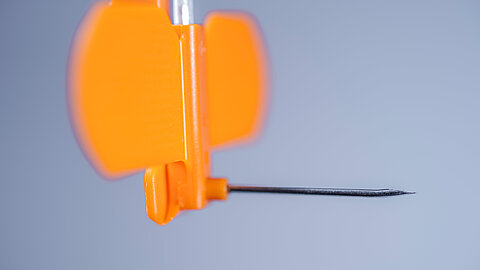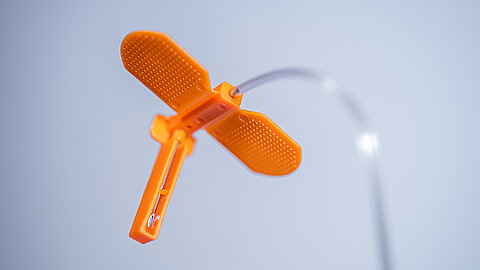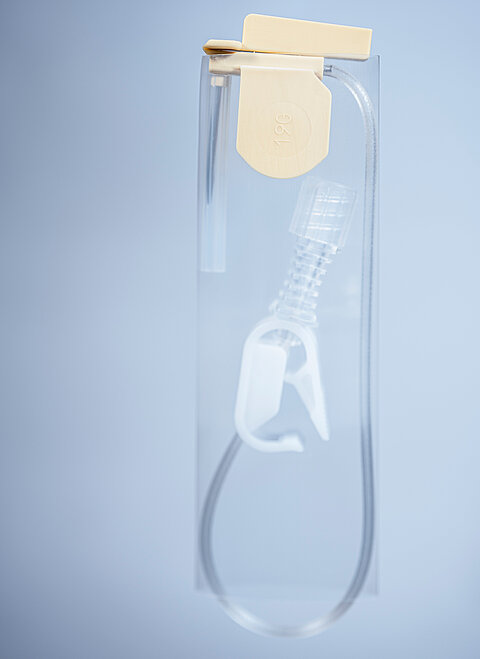Port cannula with and without safety function
A port cannula is a special type of needle used in the administration of long-term therapies. It is designed to provide safe access to a patient’s vascular system via a port implanted under the patient’s skin. From the port, a catheter is inserted into a large vein. A special membrane in the port allows a doctor to insert a port cannula and administer medical or collect a blood sample without having to insert a new needle into a vein each time.
Thanks to port cannulas, chemotherapeutics, antibiotics, parenteral nutrition, and other therapies and be administered more gently and with great ease on the patient. The port system reduces the risk of infection and vein damage as the vein does not need to be directly accessed for each dose.
Port cannulas improve the quality of life for patients that need regular infusions. They also ease the burden on the medical staff. This application method has been established as an effective, patient friendly, method for those needing continuous medical care.
Safety functions in accordance with TRBA250 are intended to eliminate the risk of needlestick injuries when using the port cannulas.
Customer requirement:
The development of several port cannula variants with different bevel geometries, such as the Huber tip. Also needed were safety features to help prevent needlestick injuries in accordance with TRBA250.
Our solution:
sfm has adapted special bevel geometries to respective port systems. This helps reduce the risk of injuring the patient or damaging the cannula or port during administration. Our safety models incorporate the TRBA250 requirements and minimize the risk of injury to users when treating patients.



